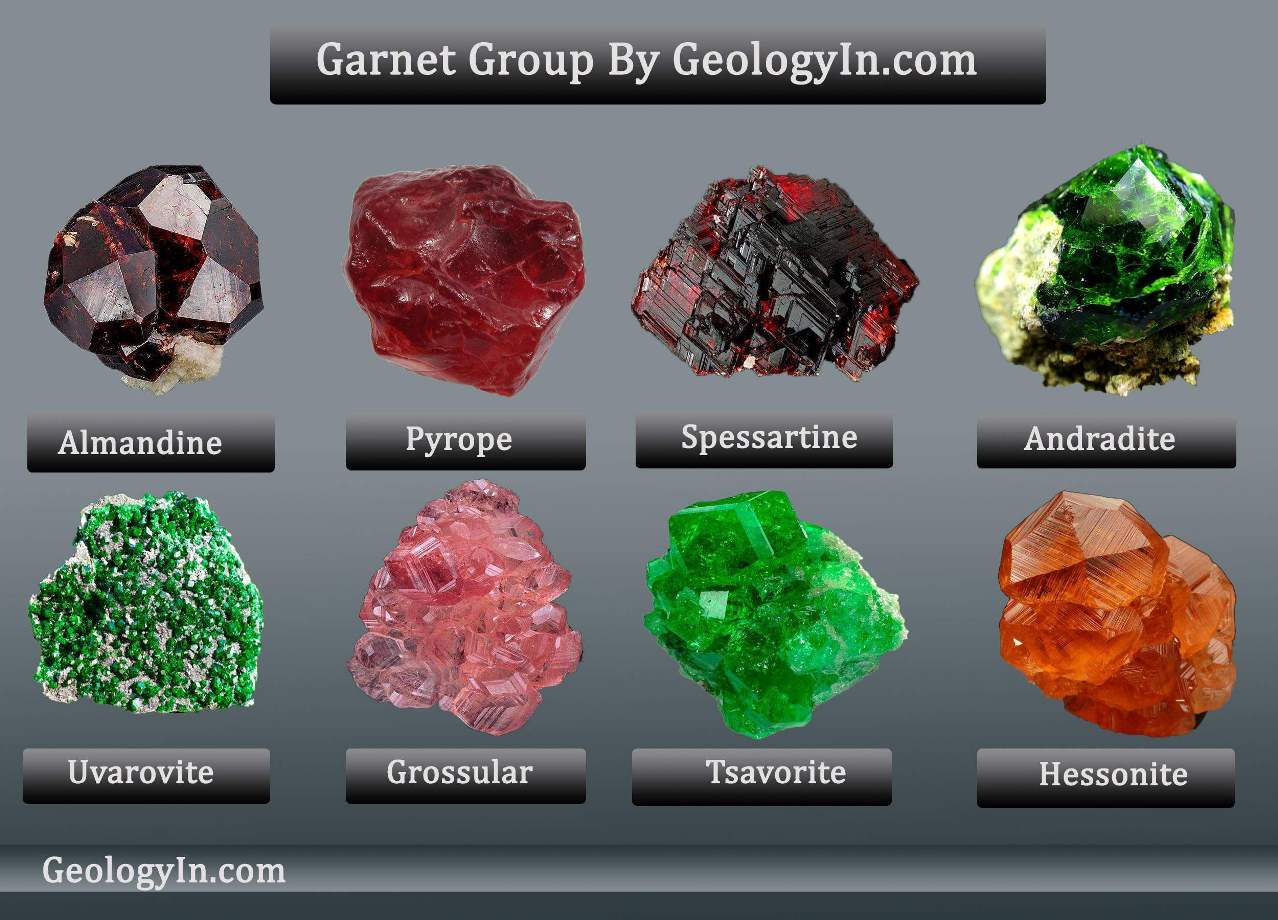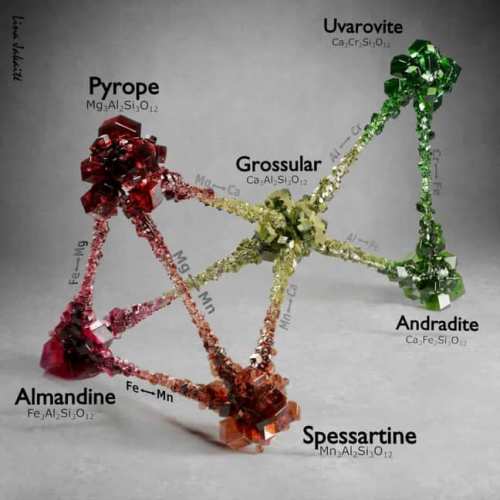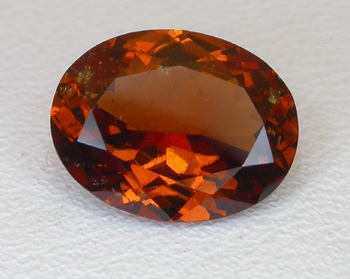Post by 1dave on May 7, 2019 10:35:10 GMT -5
Star garnet. Recent info about Idaho's garnet area.
how to orient star garnet
Slave Labor Garnets & Magnetism

www.esci.umn.edu/courses/1001/minerals/garnet.shtml
In Our Earth: The Geologic Importance of Garnet
Garnets occur in some igneous rocks and pegmatites, but are more typical of high-grade metamorphic rocks. Although identifying individual varieties of garnet is not important to a non-specialist, geologists use these different varieties as a way to gauge a rock’s metamorphic grade (the degree to which it has been altered), as the different garnets’ formation and composition reflects the temperature and pressure conditions their host rock endured. Hence garnets tend to record the geologic history of their host rock.
Almandine, the iron-rich garnet variety, commonly forms from regional metamorphism of clay sediments and is the most common garnet in schists and gneisses. It also occurs in silica-rich igneous rocks, such as granite, rhyolite, or associated pegmatites. Pyrope, the magnesium-rich variety is more common in mafic igneous rocks and metamorphosed mafic igneous rocks, while the calcium-rich garnets, Grossular and Andradite, are commonly found in metamorphosed carbonate rocks. Spessartine is found in granite pegmatites and metamorphosed manganese-rich rocks, while Uvarovite is the rarest garnet variety, only occurring as crusts or seams in some chromium deposits.
As garnets are chemically and physically resistant they often survive the erosion of metamorphic rocks, becoming loose garnet grains. These garnet sands can be concentrated by wave and current action into ‘heavy’ mineral sand deposits.
In most metamorphic rocks, garnets are typically associated with the mica minerals and other metamorphic minerals such as staurolite, kyanite, and sillimanite. Calcium-rich garnet varieties usually form in metamorphosed carbonate rocks where they may be found with calcite, wollastonite, or metallic ore deposits. Garnet grains in sedimentary sandstones usually occur with other heavy mineral grains or resistant minerals such as quartz.
how to orient star garnet
Slave Labor Garnets & Magnetism

www.esci.umn.edu/courses/1001/minerals/garnet.shtml
Description and Identifying Characteristics
The word ‘garnet’ comes from the Latin word granatus, which means ‘seed-like,’ a reference to the common appearance of garnets as discrete small red rounded crystals that look like pomegranate seeds embedded in rock. The different garnet varieties comprise a group of minerals that all share a similar crystal structure, but whose chemical composition varies as different ions substitute for one another in that crystal structure. Most garnet crystals are actually mixtures of different garnet varieties rather than being composed solely of a single variety. As a result, there is little reason for non-specialists to worry about identifying individual garnet varieties.
Although red garnets are the most common variety, garnets occur in nearly every color except for blue. This variability in color results from the garnet crystals’ transparent to translucent nature, which allows minor impurities to greatly affect its appearance. Despite their variable appearance, garnets are usually easy to identify by their hardness, crystal habit and occurrence in metamorphic rock. Garnets usually form at high temperature and pressure, so they typically occur in their crystal form as rounded dodecahedrons (twelve-sided) or twenty-four sided trapezohedrons.
Iron can substitute relatively easily for either magnesium or manganese in the garnet structure, but calcium is a larger ion and does not substitute as freely for iron, magnesium or manganese. As a result, the garnet group can be subdivided into two series of minerals – an aluminum silicate series in which Fe+2 Mg+2 and Mn+2 freely substitute for one another and a calcium silicate series in which Cr+3, Al+3 and Fe+3 substitute for one another. Natural garnets are almost always a combination of these end-members, rather than being a pure sample of one composition.
Almandine Fe3Al2(SiO4)3 Grossular Ca3Al2(SiO4)3
Pyrope Mg3Al2(SiO4)3 Andradite Ca3Fe2(SiO4)3
Spessartine Mn3Al2(SiO4)3 Uvarovite Ca3Cr2(SiO4)3
The word ‘garnet’ comes from the Latin word granatus, which means ‘seed-like,’ a reference to the common appearance of garnets as discrete small red rounded crystals that look like pomegranate seeds embedded in rock. The different garnet varieties comprise a group of minerals that all share a similar crystal structure, but whose chemical composition varies as different ions substitute for one another in that crystal structure. Most garnet crystals are actually mixtures of different garnet varieties rather than being composed solely of a single variety. As a result, there is little reason for non-specialists to worry about identifying individual garnet varieties.
Although red garnets are the most common variety, garnets occur in nearly every color except for blue. This variability in color results from the garnet crystals’ transparent to translucent nature, which allows minor impurities to greatly affect its appearance. Despite their variable appearance, garnets are usually easy to identify by their hardness, crystal habit and occurrence in metamorphic rock. Garnets usually form at high temperature and pressure, so they typically occur in their crystal form as rounded dodecahedrons (twelve-sided) or twenty-four sided trapezohedrons.
Iron can substitute relatively easily for either magnesium or manganese in the garnet structure, but calcium is a larger ion and does not substitute as freely for iron, magnesium or manganese. As a result, the garnet group can be subdivided into two series of minerals – an aluminum silicate series in which Fe+2 Mg+2 and Mn+2 freely substitute for one another and a calcium silicate series in which Cr+3, Al+3 and Fe+3 substitute for one another. Natural garnets are almost always a combination of these end-members, rather than being a pure sample of one composition.
Almandine Fe3Al2(SiO4)3 Grossular Ca3Al2(SiO4)3
Pyrope Mg3Al2(SiO4)3 Andradite Ca3Fe2(SiO4)3
Spessartine Mn3Al2(SiO4)3 Uvarovite Ca3Cr2(SiO4)3
In Our Earth: The Geologic Importance of Garnet
Garnets occur in some igneous rocks and pegmatites, but are more typical of high-grade metamorphic rocks. Although identifying individual varieties of garnet is not important to a non-specialist, geologists use these different varieties as a way to gauge a rock’s metamorphic grade (the degree to which it has been altered), as the different garnets’ formation and composition reflects the temperature and pressure conditions their host rock endured. Hence garnets tend to record the geologic history of their host rock.
Almandine, the iron-rich garnet variety, commonly forms from regional metamorphism of clay sediments and is the most common garnet in schists and gneisses. It also occurs in silica-rich igneous rocks, such as granite, rhyolite, or associated pegmatites. Pyrope, the magnesium-rich variety is more common in mafic igneous rocks and metamorphosed mafic igneous rocks, while the calcium-rich garnets, Grossular and Andradite, are commonly found in metamorphosed carbonate rocks. Spessartine is found in granite pegmatites and metamorphosed manganese-rich rocks, while Uvarovite is the rarest garnet variety, only occurring as crusts or seams in some chromium deposits.
As garnets are chemically and physically resistant they often survive the erosion of metamorphic rocks, becoming loose garnet grains. These garnet sands can be concentrated by wave and current action into ‘heavy’ mineral sand deposits.
In most metamorphic rocks, garnets are typically associated with the mica minerals and other metamorphic minerals such as staurolite, kyanite, and sillimanite. Calcium-rich garnet varieties usually form in metamorphosed carbonate rocks where they may be found with calcite, wollastonite, or metallic ore deposits. Garnet grains in sedimentary sandstones usually occur with other heavy mineral grains or resistant minerals such as quartz.













